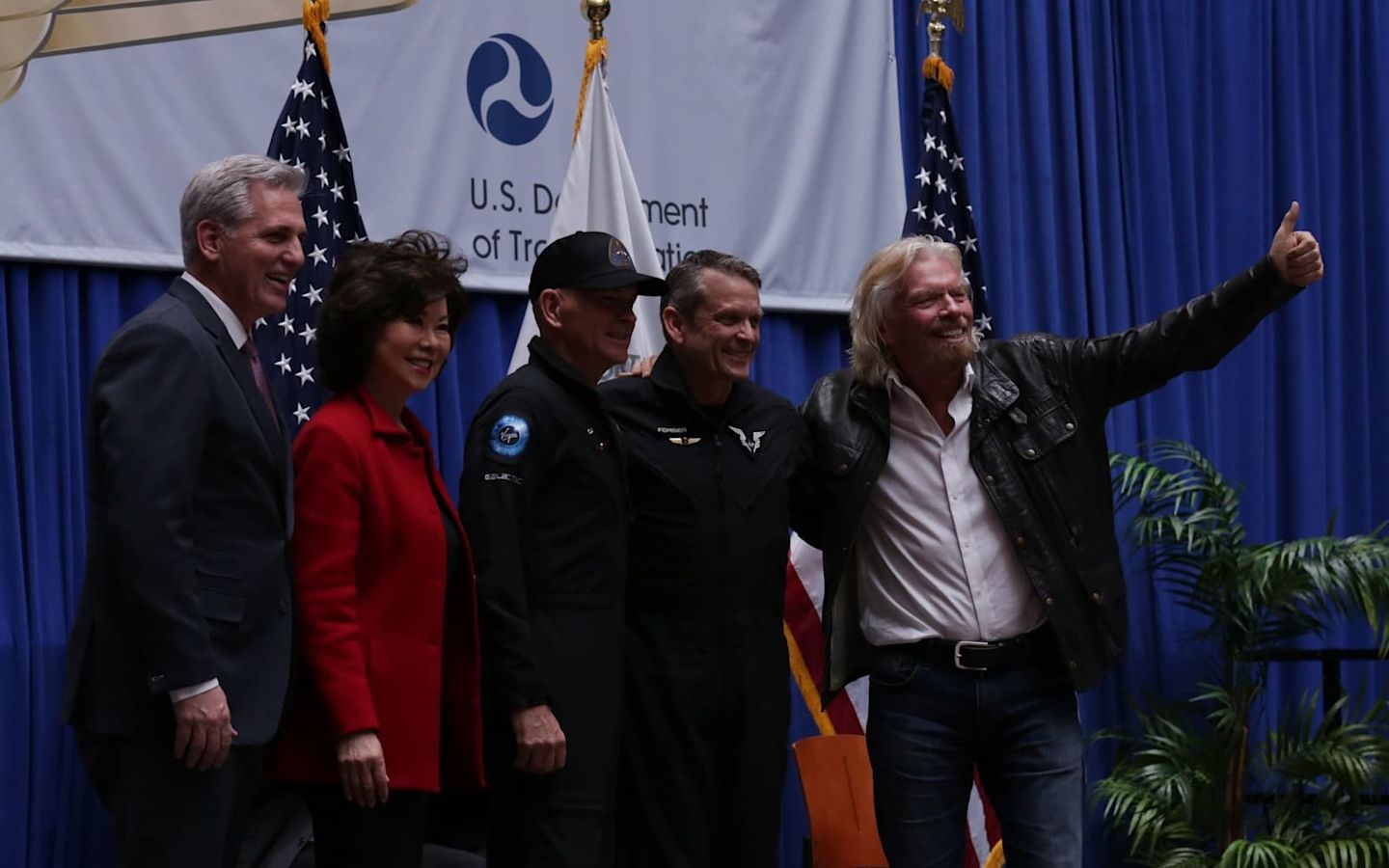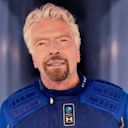Celebrating Virgin Galactic pilots’ astronaut wings
Delighted to be in Washington, D.C to celebrate Virgin Galactic pilots Mark ‘Forger’ Stucky and ‘CJ’ Sturckow being awarded Commercial Astronaut Wings by the US Department of Transportation for taking our beautiful spaceship, VSS Unity, into space.
Sincere thanks to US Transportation Secretary Elaine Chao for inviting us and hosting the ceremony at the US Department of Transportation Headquarters. The awards of the astronaut wings marked the very first time a vehicle built for commercial passenger service reached space, and the first crewed space launch from US soil since 2011.
Forger became the 568th human in space and, along with CJ, the first humans to reach space in a vehicle built for commercial passenger service. CJ also became the first astronaut to hold both commercial space and Naval Aviator Wings, having flown to orbit as a pilot on four NASA Space Shuttle missions to the ISS.
The ceremony marked a moment of historical significance, a moment of inspiration, of optimism for the future, and, at the beginning of this important year for space, a recognition of the great leadership role the US government and its agencies continue to play in helping to open space for the benefit of humankind.
It was wonderful to have a group of STEM students from DC schools in the front rows to witness our astronauts receiving their wings. Hopefully they were inspired and will one day follow in their footsteps.
Since Virgin’s Galactic’s wonderful, historic first spaceflight on December 13th last year, the first crewed space launch from US soil since the Shuttle’s final mission in 2011, I have allowed myself time to reflect a little on our journey to date, particularly in the context of the wider space industry.
We have without doubt come a long way since the early days of the 21st century, when the idea of new private companies designing, building and operating vehicles to put payload, let alone people into space, was often met with an indulgent, or perhaps a sympathetic, smile. And maybe not without some justification; because the road for all of us has been challenging.
But as we stand here at the start of 2019, it is self-evident, that we are finally at the break of a new day, at the dawn of a new age of space exploration, which will see reusable space vehicles built and operated by commercially successful private companies, transform our business and personal lives in ways which we have yet to fully comprehend.
I said after the flight on December 13th, as I stood with our pilots, CJ and Forger, that when you set off on challenging and important adventures, exceptional people come forward to join the journey; people who are consistently by your side and on your side, people who share your dreams and people who help make them reality.
After the ceremony we then got the chance to visit one of my very favourite museums in the world – the Smithsonian Air and Space Museum. It was the perfect place to celebrate within a context that reminds us of how we got here, that we are all truly standing on the shoulders of giants – more on that soon.
We announced that the hybrid rocket motor that powered SpaceShipTwo to space for the first time has been donated to the museum. It was also special to see the Rocket Motor be awarded a Guinness World Record as the ‘Most powerful hybrid rocket motor used in manned flight’. We could not be more delighted to donate a piece of history to the museum’s wonderful new exhibition, ‘Future of Spaceflight’. The desire to explore space has been an inspiration since time began and, in recent decades, an incredible catalyst for innovation. I hope our donation will also play a small part in inspiring the thousands of visitors as they pass through the new gallery in years to come.
December’s spaceflight was the latest and most significant achievement in the Virgin Galactic flight test program. We’re all looking forward to further test flights in the near future as we move steadily towards a full commercial passenger service from Spaceport America, New Mexico. Head over to Virgin Galactic to keep up to date with the world’s first commercial spaceline.





